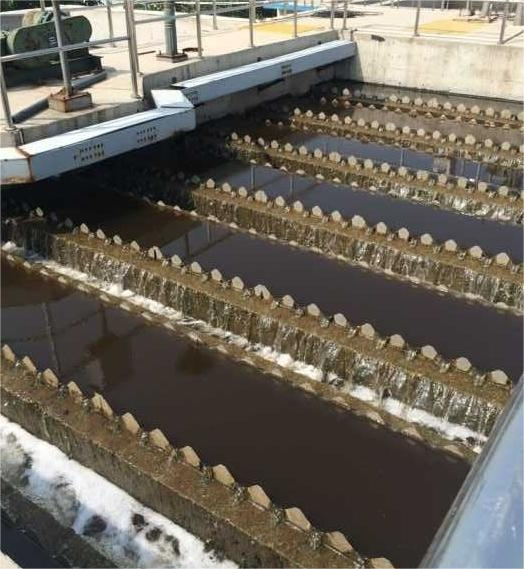Main application method of flocculant in wastewater treatment
-
Feb 22,2016

1. Chemical precipitation method: The so-called chemical precipitation method is to directly add a cyclodextrin-based flocculant or the like to the wastewater to directly react with the target pollutants present in the wastewater water body to form a precipitate that is not easily dissolved in water. The method of separating the target pollutants and removing the pollutants by the isolation method. However, chemical methods generally involve the addition of large amounts of chemicals and precipitate as precipitates. In this process, the chemical will survive and carry a large amount of pollutants after chemical treatment, causing secondary pollution and damage to the water body. Therefore, there is a breakthrough in this technology in the future.
2. Electrolysis method: The mechanism of electrolysis is applied to make the harmful substances in the original wastewater water environment pass through the electrolysis process, and the direct oxidation reaction and the reduction reaction respectively on the positive and negative poles are transformed into harmless substances to realize the wastewater purification. method. Indirect oxidation and indirect reduction may also be employed, that is, the oxidation and reduction products of the electrode are used to separate harmful substances in the wastewater to separate and remove harmful substances. This method allows the factory to use the low-voltage power supply to take materials locally, and operate at the normal temperature and pressure of the factory, which is convenient and safe to operate. However, the problem is that the power consumption and the consumption of the electrode metal are large when processing a large amount of waste water, and the separated precipitated substance is difficult to handle and utilize. This requires proper handling and placement of the sediment.
3. Ion exchange method: The ion exchange method can effectively treat and recycle heavy metals in wastewater, turning waste into treasure. However, the material agent is easily contaminated, and once it is scrapped, the recycling effect is poor, and the wastewater treatment cost is increased, resulting in waste of resources. 4. Adsorption method: The adsorption method uses pore-shaped solid pharmaceutical materials, such as activated carbon, activated coal, coke, cinder, resin, wood chips and other materials to adsorb harmful substances and pollutants in wastewater, thereby achieving pollutants and water bodies. The separation can be either physical adsorption or chemical adsorption.
4. Flocculation and sedimentation method: The main working principle of the flocculation and sedimentation method is to dissolve in an alkaline environment by using an object containing aluminum or iron. After the reaction, a colloidal group can be formed, and the pollutants in the water body can be adsorbed and adhered. And the role of the package, together with the pollutants deposited in the water body, is a technology to separate the target pollutants from the water body.
5. Biological treatment method: The development of society and the expansion of industrial scale, the current types of water pollution and wastewater components are increasing. The treatment is no longer as simple as it used to be, and it needs to be treated with more scientific microbiological methods. There are substances and environments in which the microorganisms can survive and reproduce in the sewage. Therefore, the microorganisms can obtain life nutrients from the wastewater, and can help to degrade and remove harmful substances while growing, thereby obtaining the effect of purifying the sewage. This method is not only easy to operate, but also low in cost, safe and environmentally friendly, and thus has been widely welcomed and popularized in the wastewater treatment market.
The natural polymer-based flocculant has the advantages of abundant raw material resources, high efficiency, low cost, and non-toxicity, and has a broad application prospect, and has attracted more and more people's attention. However, at present, the domestic cyclodextrin derivative flocculant products have obvious shortcomings such as single variety, backward production process and high cost. It is necessary to increase the intensity to carry out more systematic, in-depth and comprehensive research on the modification mechanism to facilitate better Product development to meet the needs of the market.